The generative AI revolution is well underway—and marketers are on the front lines. Since the introduction of GPT-powered tools like ChatGPT, marketers have rapidly integrated AI into everything from content creation and ideation to campaign execution and analytics.
But as adoption accelerates, a bigger question emerges: Are we using it well?
The opportunity is enormous—but so are the risks. Here’s what’s working today, where to tread carefully, and how to build a future-ready marketing stack in the age of GPT.
What GPT Is Changing About Marketing
At its core, GPT technology (short for Generative Pre-trained Transformer) allows marketers to generate human-like content at scale. This has unlocked new possibilities in:
- Content velocity – Faster creation of blogs, product descriptions, emails, and ad copy
- Personalization – Tailored messaging across segments and personas
- Ideation and brainstorming – Campaign themes, subject lines, even visual prompts
- Customer service and chat – AI-powered agents handling FAQs and low-complexity requests
- SEO and keyword strategy – Smart suggestions based on semantic patterns
It’s no longer a question of whether to use GPT—it’s a question of how to use it responsibly and strategically.

What’s Working Right Now
For many marketers, GPT is becoming a reliable sidekick. Use cases that are delivering real value today include:
- First-draft generation: Letting AI handle the heavy lift of a blank page—for blogs, emails, or social posts—so teams can focus on refinement and brand alignment.
- Summarization and transcription: Turning long-form webinars, internal briefings, or interviews into summaries, takeaways, and content assets.
- Creative brainstorming: Rapidly generating headline variations, campaign taglines, or concept ideas during early planning stages.
- Repetitive content tasks: Writing hundreds of meta descriptions or programmatically varying CTAs for different segments.
- Localized or segmented copy: Drafting region- or audience-specific variations of global campaigns faster than human teams could keep up.
What’s Risky or Overhyped
Despite the hype, GPT isn’t a plug-and-play replacement for marketers. Some areas require caution:
- Factual accuracy: GPT models don’t “know” things—they generate based on patterns. That leads to hallucinations and confidently wrong outputs, especially on niche or time-sensitive topics.
- Brand voice dilution: Without human oversight, GPT can produce copy that feels generic, off-brand, or even contradictory to your tone.
- Ethical and legal gray areas: Questions of disclosure (who wrote this?), authorship, and copyright are still evolving.
- SEO traps: Search engines are growing wary of AI-generated content that lacks originality or value, and duplicate content penalties may apply.
- Compliance and data sensitivity: Sensitive industries (healthcare, finance, government) must be vigilant about what information enters or exits AI platforms.
Marketers who treat GPT like an autopilot risk reputational and operational setbacks. It’s a tool, not a shortcut.

Building a Responsible AI Marketing Stack
To harness GPT effectively, organizations must adopt it deliberately, not reactively. That means establishing the right systems, standards, and safeguards.
1. Human-in-the-loop workflows
Every AI-generated asset should be reviewed, edited, and signed off by a human—especially in regulated or high-stakes environments.
2. AI content governance
Create prompt libraries, tone-of-voice rules, and QA checklists to ensure outputs meet brand and quality standards.
3. Secure tool selection
Favor GPT-powered platforms that offer enterprise-level data privacy, security compliance, and model transparency.
4. Defined use cases
Clearly outline where AI should and should not be used—such as ideation vs. thought leadership, internal drafts vs. public statements.
5. Team training
Equip marketers with prompt-writing best practices and guidance for effectively integrating AI into their workflows.
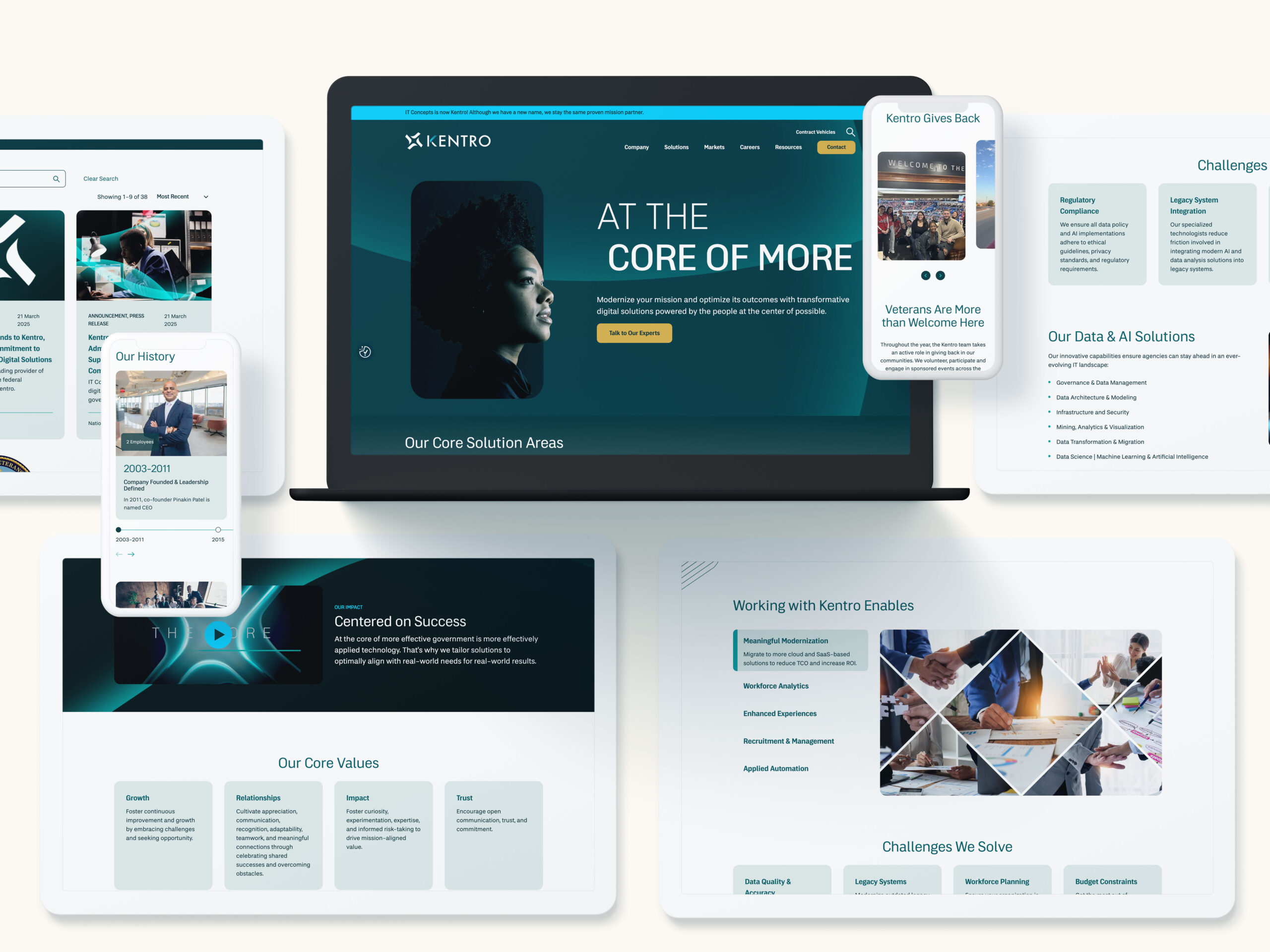
What’s Next: The Future of AI in Marketing
GPT is only the beginning. What’s coming next will expand what marketing teams can do:
- Real-time content adaptation: AI-generated content that evolves live based on user behavior, location, or engagement level.
- Multimodal experiences: Combined text, image, and video generation to streamline asset creation across channels.
- Deeper CRM integration: AI powering more personalized nurture flows and content recommendations within marketing automation platforms.
- Strategic co-pilots: AI tools that help marketers analyze performance data, suggest optimizations, and even A/B test content on the fly.
In short: GPT will go from content creator to campaign collaborator.
Ready to Build an AI-Enhanced Marketing Machine?
Bluetext helps brands responsibly scale generative AI across their marketing ecosystem—bringing speed and creativity without sacrificing strategy, quality, or control. Whether you’re building GPT into your content engine, brand voice, or marketing automation stack, we’ll help you do it right.
Contact us to develop an AI roadmap that enhances your brand, streamlines your campaigns, and sets you up for the next frontier.
For years, headless CMS platforms have been the go-to solution for brands seeking flexibility, speed, and scalability in their digital content delivery. By decoupling the front end from the back end, headless architecture empowered marketers and developers to create omnichannel experiences with greater efficiency. But as user expectations grow more sophisticated and digital ecosystems become more complex, even headless is starting to show its limits.
So what’s next? The future of content management isn’t just about removing the head—it’s about building a smarter, more adaptable brain. From composable digital experience platforms to AI-driven personalization engines, the next generation of CMS technology is poised to transform how organizations structure, deliver, and optimize content.
Here’s what’s on the horizon.
Composable Architecture: Breaking Down the Monolith for Good
If headless CMS decoupled the front end from the back end, composable architecture takes things a step further—decoupling everything. A composable digital experience platform (DXP) allows organizations to assemble a custom stack of best-of-breed tools for CMS, e-commerce, personalization, analytics, and more, all connected via APIs.
The result? Greater agility. Marketers and IT teams are no longer boxed into rigid, one-size-fits-all platforms. Instead, they can mix and match services that best support their goals—whether that’s fast localization, dynamic pricing, or seamless omnichannel orchestration. Composable architecture also allows for incremental upgrades, so brands can evolve their digital presence without overhauling entire systems.
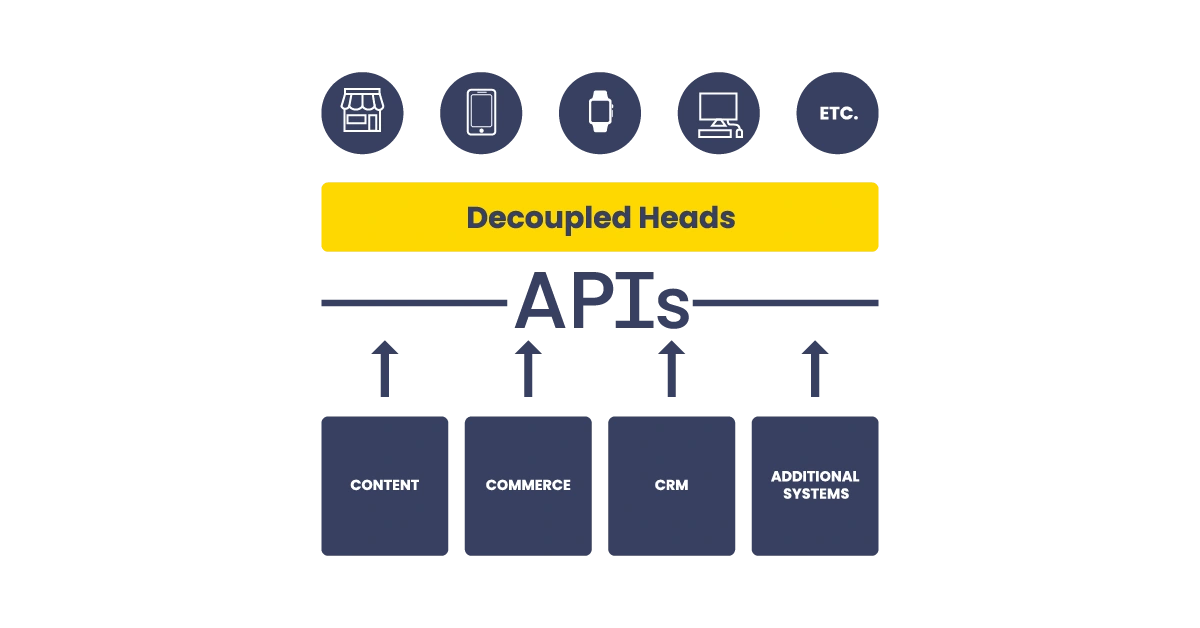
AI-Powered Content Delivery Is Here—and Growing Fast
AI is no longer a buzzword in CMS. It’s becoming the engine behind smarter content experiences. From predicting what content a user will find most valuable, to dynamically adjusting layouts based on behavior, AI is changing the way brands think about digital engagement.
Modern CMS platforms are beginning to integrate AI-driven features like:
- Content recommendations based on user behavior and intent
- Automated tagging and metadata generation for better asset management
- Real-time personalization, delivering tailored content to the right audience at the right time
By embedding AI into the content supply chain, brands can move beyond static publishing toward experiences that are predictive, personalized, and performance-driven.

Content Operations Are Getting an Overhaul
The CMS of the future doesn’t just manage content—it powers an entire ecosystem of digital operations. That means tighter integration with Digital Asset Management (DAM) platforms, Customer Data Platforms (CDPs), and marketing automation tools.
Content teams are shifting away from traditional editorial calendars and rigid workflows. Instead, they’re embracing:
- Structured content models that support reusability across channels
- Data-informed content strategies based on performance insights
- Collaborative environments where marketers, designers, and developers work in sync
This new model of Content Ops is about more than publishing—it’s about treating content as a living asset that evolves and adapts to user needs.
API-First, Cloud-Native Platforms Are the New Standard
As organizations grow more complex and global, performance and scalability are critical. That’s where API-first, cloud-native CMS solutions come in. Built for integration and extensibility, these platforms allow developers to plug into virtually any system—without being locked into a vendor’s proprietary tools or workflows.
Benefits of API-first CMS platforms include:
- Faster development and deployment cycles
- Seamless integration with existing martech and eCommerce platforms
- Improved security, scalability, and reliability through modern cloud infrastructure
For enterprise brands navigating multi-site, multilingual, or multi-channel challenges, API-first CMS solutions offer the flexibility to deliver consistent, high-performance experiences across the board.

So, What Should Brands Do Now?
If your organization is currently running a traditional CMS—or even a headless one—it’s time to look ahead. The CMS landscape is evolving rapidly, and the platforms of tomorrow will be defined by their intelligence, adaptability, and interoperability.
Key considerations as you plan for the future:
- Audit your current content ecosystem: What tools are in place, and where are the bottlenecks?
- Invest in modular, composable architecture: Future-proof your stack by prioritizing flexibility and integration.
- Explore AI capabilities: Start with features like smart recommendations or auto-tagging, and scale up as you see results.
- Think beyond websites: Your CMS should support a unified experience across mobile, social, voice, and more.
At Bluetext, we help organizations reimagine their digital infrastructure to support not just where they are—but where they’re going.
Ready to evolve your CMS strategy?
Contact Bluetext to architect a future-ready content platform that’s intelligent, scalable, and built to grow with your brand.
Large Language Models (LLMs) like GPT-4 and Claude have transformed how we generate content, automate support, and surface internal knowledge. While these models offer immense potential, B2B organizations are discovering that off-the-shelf versions often fall short of enterprise expectations. Generic tone, inconsistent outputs, and a lack of domain specificity can limit effectiveness. So how can B2B brands truly unlock the power of LLMs? The answer lies in optimization.
Why Generic LLMs Aren’t Enough for B2B
Out-of-the-box LLMs are trained on general internet data, which means they’re not designed to understand your industry, products, or brand voice. This leads to:
- Hallucinated facts and technical inaccuracies
- Off-brand tone and messaging
- Compliance and privacy risks
- Limited ability to serve nuanced enterprise use cases
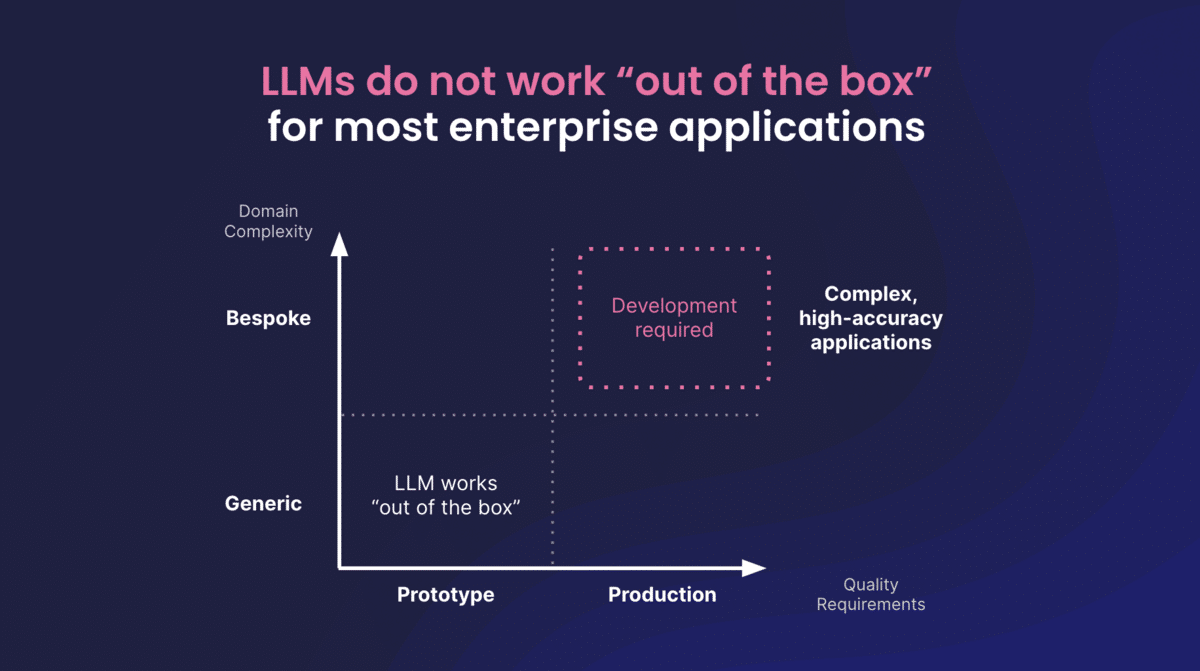
Techniques to Optimize LLMs for B2B
Prompt Engineering: Crafting structured, context-rich prompts improves output relevance. Setting clear roles (e.g., “Act as a cybersecurity analyst”) or constraints (“Write in AP style”) can guide the model toward better responses.
Retrieval-Augmented Generation (RAG): This technique enriches LLM outputs with real-time access to enterprise-specific documents, ensuring factual, contextual answers pulled from your proprietary knowledge base.
Model Fine-Tuning: Training the model on your company’s data—such as product manuals, sales materials, and case studies—improves performance for specific applications. This results in more accurate, brand-aligned outputs.
Feedback Loops: Use internal teams or customers to rate and improve model responses over time. Feedback-driven reinforcement learning ensures ongoing optimization based on real-world usage.
Enterprise Use Cases for Optimized LLMs
- Sales Enablement: Auto-generate pitch decks, email templates, and product one-pagers that align with specific buyer personas.
- Customer Support: Deploy intelligent chatbots capable of resolving complex queries using your documentation.
- Internal Knowledge Management: Build assistants that help employees find the right information fast, reducing reliance on outdated wikis or manual search.
- Content Marketing: Streamline content creation for blogs, SEO, and social while maintaining brand tone and compliance.
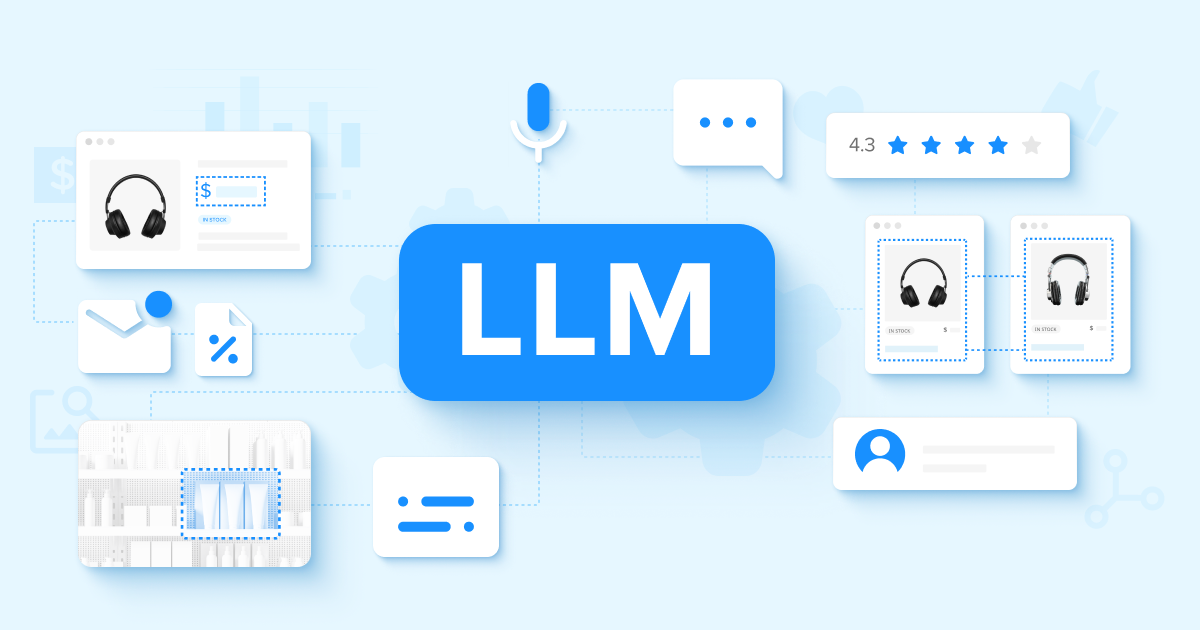
Governance and Compliance Considerations
For B2B, especially in regulated industries, optimization must go hand-in-hand with governance:
- Enforce brand voice and tone through structured prompts and content templates.
- Ensure data privacy by keeping proprietary content secure during model training.
- Establish clear human-in-the-loop review processes for sensitive outputs.
Final Thoughts
Generic AI won’t cut it in B2B. By investing in LLM optimization techniques like prompt engineering, RAG, and fine-tuning, companies can unlock smarter, more scalable results across marketing, sales, and support. The key is starting with a strategy tailored to your goals, audiences, and compliance needs.
Ready to elevate your AI strategy? Contact Bluetext to explore how customized LLMs can deliver measurable value for your enterprise.
The customer journey has never been more complex. With consumers interacting across multiple touchpoints—websites, social media, email, mobile apps, and in-person experiences—marketers must navigate vast amounts of data to understand and anticipate customer needs. Enter predictive AI, a game-changing technology that empowers brands to analyze customer behavior, forecast future actions, and deliver personalized experiences at scale.
In this blog, we’ll explore how predictive AI is transforming customer journey mapping and equipping marketers with the tools to enhance engagement, improve retention, and drive conversions.
What is Predictive AI?
Predictive AI uses machine learning algorithms, big data, and artificial intelligence to identify patterns in customer behavior and predict future actions. By analyzing historical data, predictive AI helps brands determine which marketing strategies are most effective, when customers are likely to make a purchase, and how to tailor messaging for maximum impact.
Key benefits of predictive AI include:
- Personalized Customer Experiences: AI analyzes behavioral data to customize interactions and recommendations.
- Improved Lead Scoring: AI assigns value to potential customers based on their likelihood to convert.
- Optimized Marketing Spend: AI identifies high-impact channels, ensuring budget is allocated efficiently.
- Proactive Customer Retention: AI detects churn risks early, enabling brands to intervene with targeted retention strategies.
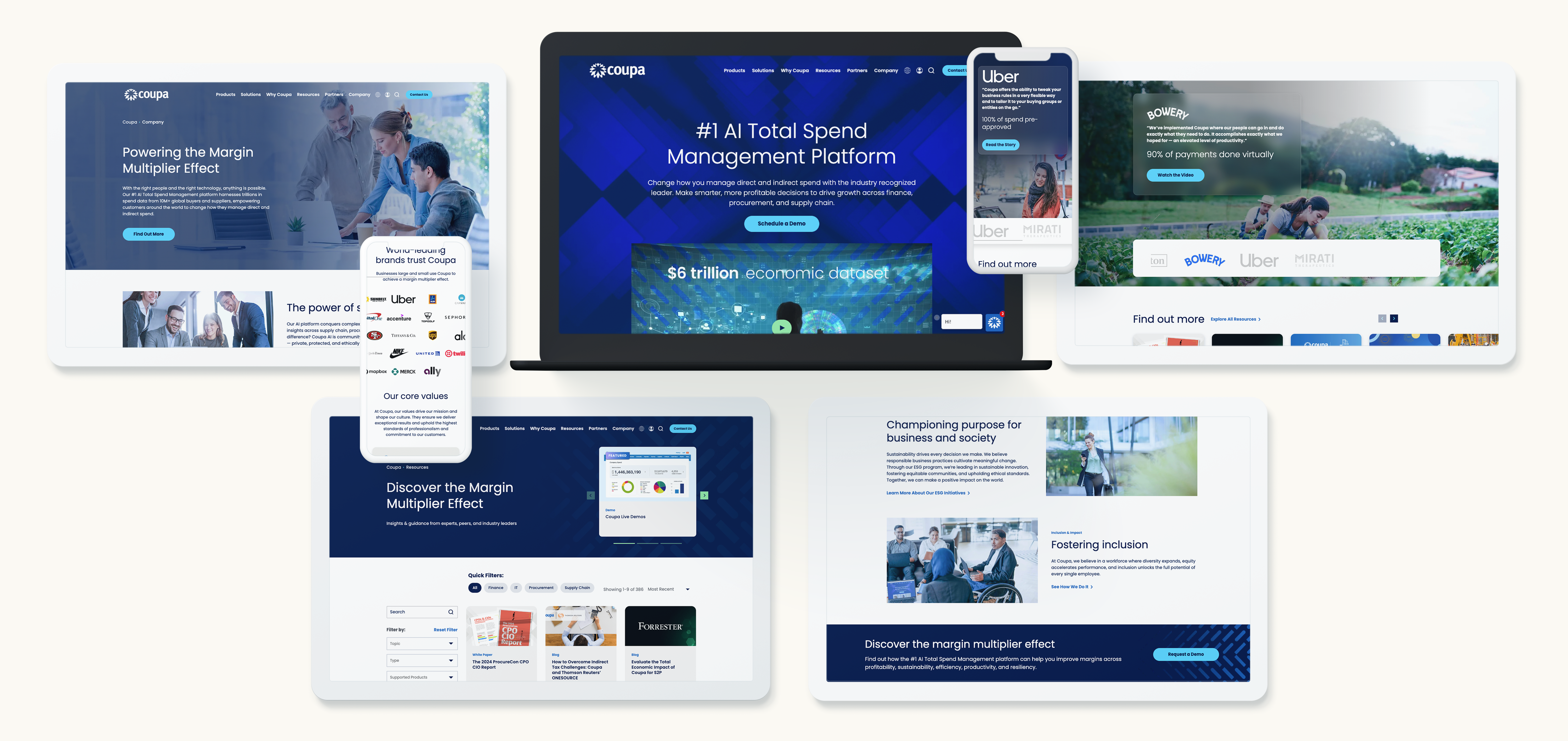
How Predictive AI Enhances Customer Journey Mapping
Traditional customer journey mapping relies on past interactions to infer future behavior. Predictive AI takes this a step further by using real-time data and machine learning to create dynamic, constantly evolving journey maps. Here’s how:
1. Predicting Customer Needs Before They Arise
By analyzing browsing behavior, past purchases, and engagement history, predictive AI can anticipate customer needs and deliver proactive recommendations. For example, e-commerce platforms use AI to suggest products based on a customer’s browsing habits, while SaaS companies predict feature adoption trends to improve user retention.
2. Real-Time Personalization at Every Touchpoint
AI-driven journey mapping allows brands to personalize experiences across multiple channels. Whether it’s tailoring email content, adjusting website interfaces, or serving hyper-relevant ads, predictive AI ensures that customers receive the right message at the right time.
3. Identifying and Addressing Pain Points
Predictive AI analyzes customer feedback, sentiment data, and behavior to pinpoint friction points in the customer journey. By identifying where users drop off or disengage, brands can implement proactive solutions, such as chatbot support, improved UX design, or automated follow-ups.
4. Enhancing Customer Support with AI Chatbots
AI-powered chatbots leverage predictive analytics to resolve customer issues before they escalate. By understanding previous interactions and common pain points, these bots can provide personalized responses, reducing response times and enhancing customer satisfaction.
5. Driving Retention Through Predictive Churn Analysis
One of the most powerful applications of predictive AI is identifying customers at risk of churn. By detecting declining engagement, reduced purchase frequency, or negative sentiment, AI enables marketers to implement targeted retention efforts, such as exclusive offers, loyalty incentives, or personalized outreach.
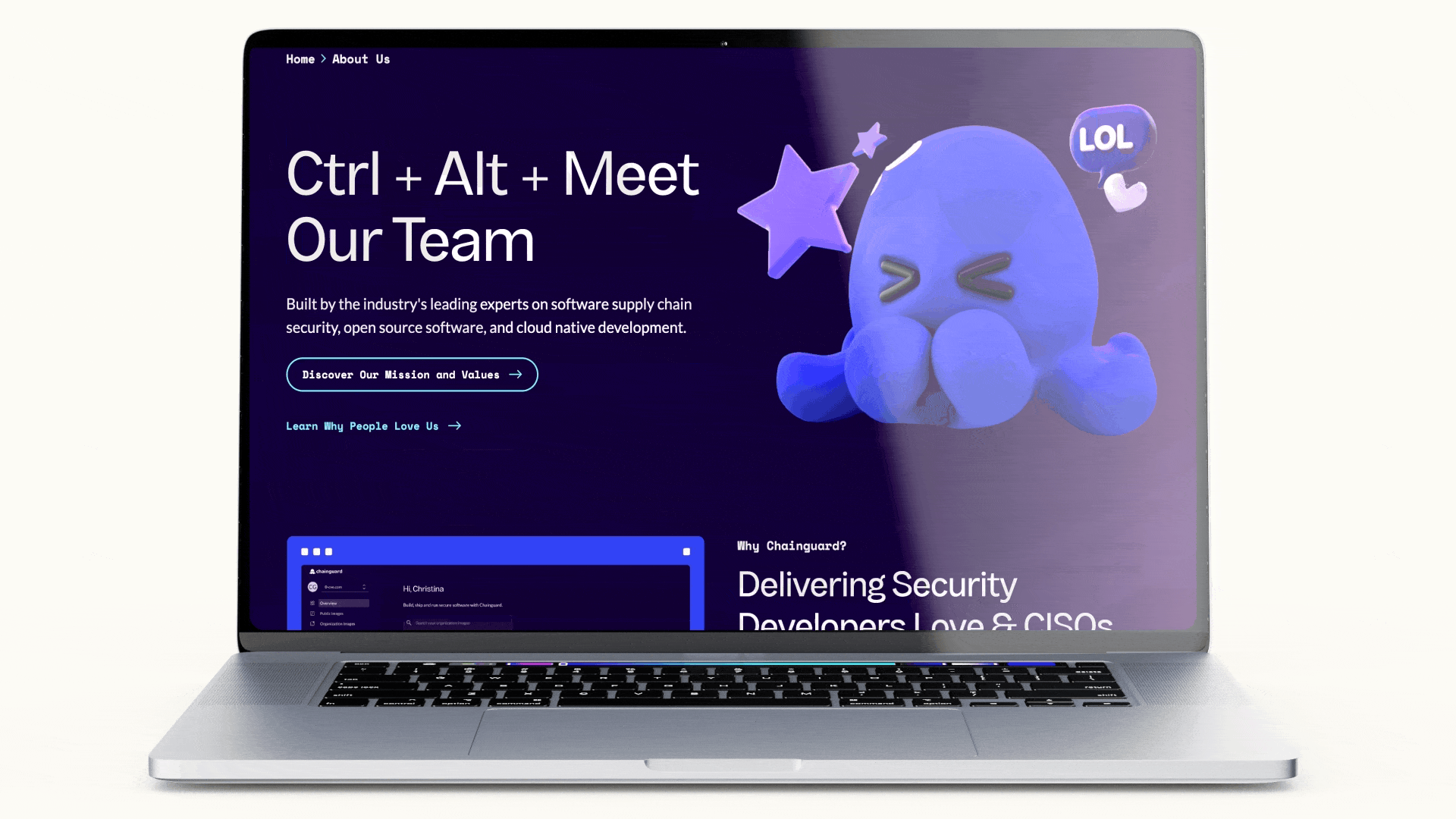

Challenges and Considerations for Marketers
While predictive AI offers immense benefits, it’s not without challenges:
- Data Privacy and Compliance: AI relies on large datasets, making adherence to regulations like GDPR and CCPA essential.
- Quality of Data: AI is only as effective as the data it processes. Inaccurate or incomplete data can lead to misleading insights.
- Implementation Complexity: Integrating predictive AI into existing marketing strategies requires the right tools, expertise, and infrastructure.
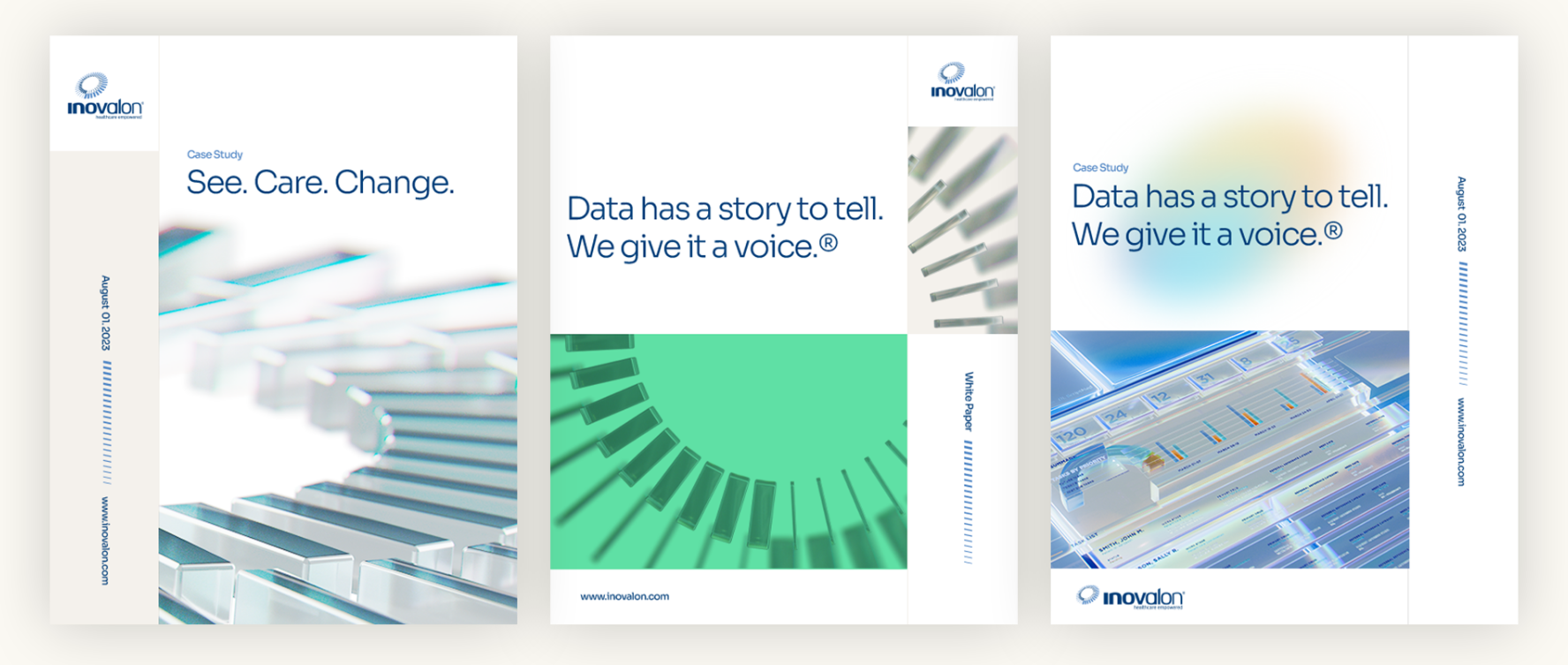

How Marketers Can Leverage Predictive AI Effectively
To maximize the benefits of predictive AI in customer journey mapping, marketers should:
- Invest in AI-Powered CRM and Analytics Tools: Platforms like HubSpot, Salesforce, and Adobe Sensei offer AI-driven insights for customer journey optimization.
- Adopt a Data-Driven Mindset: Encourage teams to prioritize data collection, analysis, and refinement.
- Test and Iterate: Continuously monitor AI-driven insights and adjust strategies based on performance.
- Ensure Ethical AI Use: Maintain transparency in data collection and adhere to privacy regulations.


Transform Your Customer Journey with Bluetext
Predictive AI is redefining the way brands understand and engage with customers. By leveraging AI-driven insights, marketers can create seamless, personalized, and highly effective customer journeys that drive growth and loyalty. Ready to harness the power of predictive AI? Contact Bluetext today to discover how AI-driven customer journey mapping can elevate your marketing strategy.
Artificial intelligence (AI) is revolutionizing search engine optimization (SEO), making it easier for businesses to improve rankings and visibility. From automated content optimization to predictive analytics, AI-powered tools help marketers refine their SEO strategies efficiently. In this guide, we’ll explore how AI is transforming SEO and which tools can give your brand a competitive edge.
How AI is Transforming SEO
AI enables more precise keyword targeting, smarter content recommendations, and real-time performance analysis. Businesses that embrace AI-driven SEO gain a competitive advantage in the digital landscape.
Key Benefits of AI-Driven SEO Tools:
- Enhanced keyword research: AI identifies emerging trends and high-value keywords.
- Automated content optimization: AI-powered suggestions improve readability and relevance.
- Smarter link-building strategies: AI detects valuable backlink opportunities.


Top AI Tools for SEO Optimization
1. AI-Powered Keyword Research
Tools like Clearscope and Semrush use AI to analyze search trends and recommend high-impact keywords.
2. Automated Content Optimization
Platforms like SurferSEO and MarketMuse help structure content for maximum SEO value.
3. AI-Based Technical SEO Audits
Tools such as Screaming Frog and Lumar identify and fix website issues automatically.
4. Predictive SEO Analytics
AI-driven analytics forecast search engine trends, allowing businesses to adapt proactively.



The Future of AI in SEO
Voice search optimization will become increasingly important as more consumers rely on smart assistants for search queries. AI-generated content will streamline content creation, enabling brands to scale their digital presence efficiently. Additionally, real-time SEO adjustments will allow businesses to respond dynamically to algorithm changes, ensuring sustained search visibility. By leveraging AI-powered tools, companies can stay ahead of the competition and maximize their online impact.
Want to leverage AI-driven tools for better SEO performance? Contact Bluetext today to optimize your strategy for success.
The lines between public relations and digital marketing continue to blur, creating new opportunities for brands to amplify their reach and credibility. In 2025, successful marketing strategies will rely on seamless integration between PR and digital channels, leveraging data-driven insights, AI, and multimedia content to engage audiences effectively. This blog explores how businesses can align PR and digital marketing to maximize brand impact.
The Convergence of PR and Digital Marketing
Traditionally, PR focused on reputation management and media relations, while digital marketing prioritized lead generation and online visibility. However, as the digital landscape evolves, PR and digital marketing must work together to build trust and drive engagement.
Key Benefits of Integrating PR and Digital Marketing:
- Enhanced credibility: Digital PR efforts, such as guest articles and influencer collaborations, build authority and trust.
- Greater reach: Combining PR-driven storytelling with SEO and social media extends brand visibility.
- Stronger audience connections: Engaging content backed by PR strategies fosters deeper relationships.
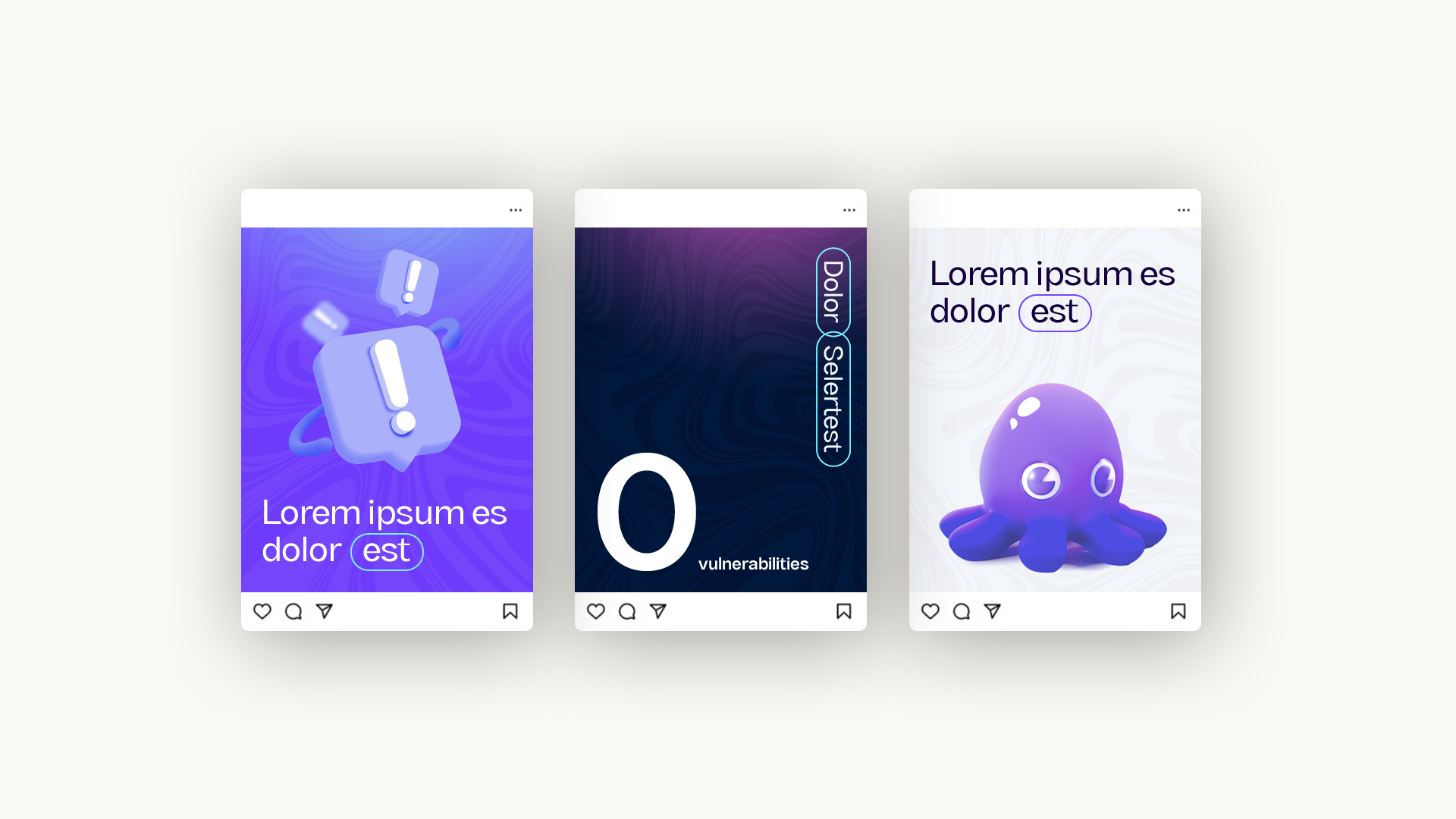

Strategies for a Unified PR & Digital Marketing Approach
1. Data-Driven PR Campaigns
Leveraging analytics and audience insights enables PR teams to craft targeted messages that align with digital marketing goals.
2. Content Marketing with PR Influence
Creating high-quality content that aligns with PR narratives helps brands establish thought leadership and authority.
3. Social Media Amplification
PR efforts gain traction when combined with social media strategies, driving greater engagement and shareability.
4. SEO-Optimized Press Releases
Optimizing press releases for search engines ensures they reach a wider audience and contribute to long-term brand visibility.
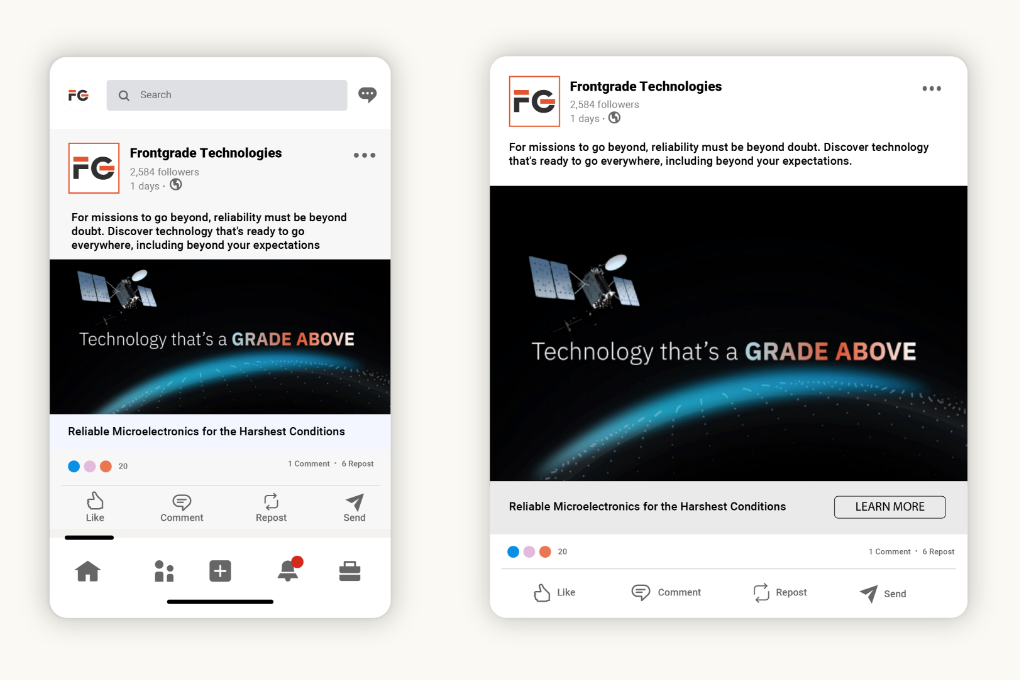

Future Trends: Where PR Meets Digital in 2025
AI-powered media monitoring will enhance PR effectiveness, enabling brands to track conversations and measure sentiment more efficiently. Influencer-driven PR will play a greater role in brand credibility, as consumers continue to value authentic endorsements. Additionally, interactive PR campaigns using video, augmented reality (AR), and virtual reality (VR) will provide immersive storytelling experiences that captivate audiences. By staying ahead of these trends, businesses can ensure their PR and digital marketing efforts remain impactful and relevant.
Looking to integrate PR and digital marketing seamlessly? Contact Bluetext today to build a cohesive strategy that drives results.
Artificial intelligence has revolutionized marketing, offering tools that enhance efficiency, precision, and scalability. From chatbots to predictive analytics, AI has unlocked new ways to engage audiences and optimize campaigns. However, as brands embrace automation, there is a pressing challenge: maintaining an authentic, human connection. How can marketers strike the right balance?
The Power of AI in Marketing
AI streamlines complex processes like data analysis, content creation, and personalization. Tools powered by AI can segment audiences, recommend tailored content, and predict consumer behavior—saving marketers time and boosting ROI. Chatbots enable instant communication, while AI-driven ad platforms ensure campaigns reach the right audience at the right time.
Moreover, AI enables real-time decision-making. Marketers can adjust campaigns based on live analytics, ensuring that messaging remains relevant. For instance, AI can identify trending topics on social media, allowing brands to join conversations and stay culturally relevant. Beyond efficiency, AI also enhances creativity through tools that generate content ideas or even design assets.
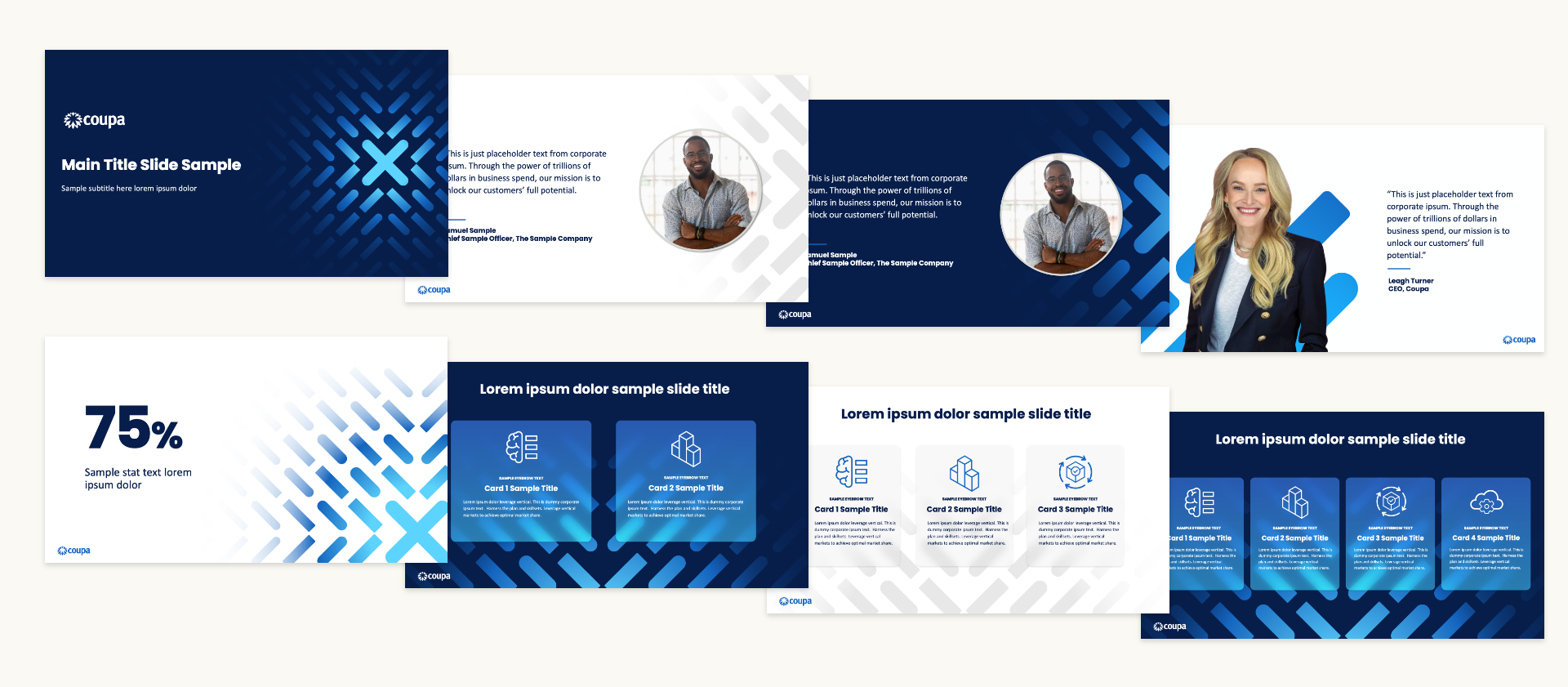

The Risk of Losing Authenticity
While AI enhances efficiency, it can risk alienating audiences if overused or misapplied. Consumers value human touchpoints, especially in industries that rely on trust, like healthcare or financial services. Over-reliance on AI can make interactions feel impersonal, leading to disengagement.
Additionally, there’s a growing concern about the ethical use of AI. Missteps in personalization, such as overly invasive data tracking, can erode trust. Similarly, relying too heavily on automated responses can create frustration when customers encounter complex issues that require empathy and nuanced problem-solving. Striking a balance between automation and authenticity requires intentionality and foresight.


Striking the Balance
- Human-AI Collaboration: Use AI for data analysis but let humans craft messages that resonate emotionally. For instance, AI can analyze customer sentiment, but human marketers should interpret that data to create meaningful campaigns.
- Transparent Communication: Disclose when AI is in use, such as chatbots, to build trust. Transparency fosters a sense of honesty, helping audiences feel respected and valued.
- Periodic Oversight: Regularly review AI-driven campaigns to ensure they align with brand values and audience expectations. Conduct audits to identify areas where human intervention might enhance effectiveness.
Leveraging AI Responsibly
Brands should view AI as a tool to enhance, not replace, human creativity and connection. By establishing clear boundaries—such as reserving certain touchpoints for human interaction—marketers can maintain authenticity. Training employees to work alongside AI systems can also create a more cohesive strategy where technology and humanity complement one another.
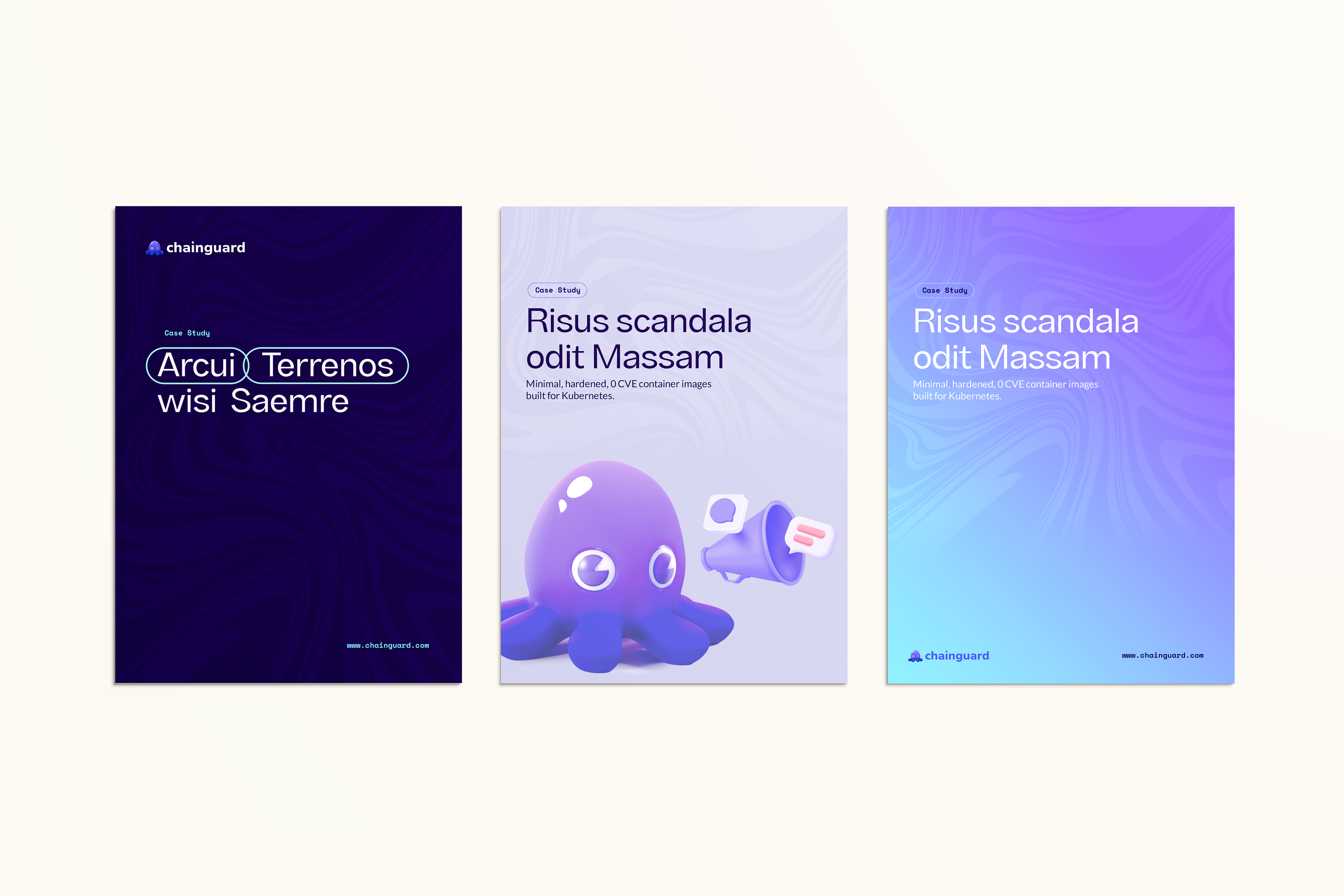

A Future of Synergy
By blending AI efficiency with human creativity, brands can achieve authentic connections that resonate deeply with audiences. Striking this balance isn’t just a best practice—it’s essential for long-term marketing success. As AI continues to evolve, the brands that succeed will be those that use it to enhance—rather than replace—the human touch. Contact Bluetext today to explore how we can help you navigate AI-driven marketing strategies that balance innovation with authenticity.
As the marketing landscape continues to evolve at a breakneck pace, businesses must look ahead to stay competitive in the years to come. By 2025, the strategies that once worked will need to be adapted to meet new expectations and leverage emerging technologies. From AI-driven personalization to sustainability in brand messaging, the future of marketing will be shaped by innovation, agility, and a deep understanding of consumer preferences.
In this blog, we’ll explore the key trends that will drive marketing success in 2025 and provide actionable steps businesses can take today to future-proof their marketing efforts.
The Power of AI-Driven Personalization
Artificial intelligence (AI) is transforming marketing by enabling hyper-personalized customer experiences at scale. AI tools can analyze vast amounts of customer data, allowing brands to predict behavior, deliver tailored content, and create highly relevant recommendations. This level of personalization not only enhances customer satisfaction but also fosters brand loyalty.
For instance, companies like Netflix and Amazon have mastered the art of AI-driven personalization, delivering content and product recommendations based on user preferences and behavior. As we approach 2025, consumers will expect this kind of personalized experience from every brand they interact with.
Actionable Step: Invest in AI-powered marketing tools that allow you to gather and analyze customer data effectively. Start by integrating AI into your email marketing, content delivery, and e-commerce platforms to offer personalized recommendations and improve engagement.
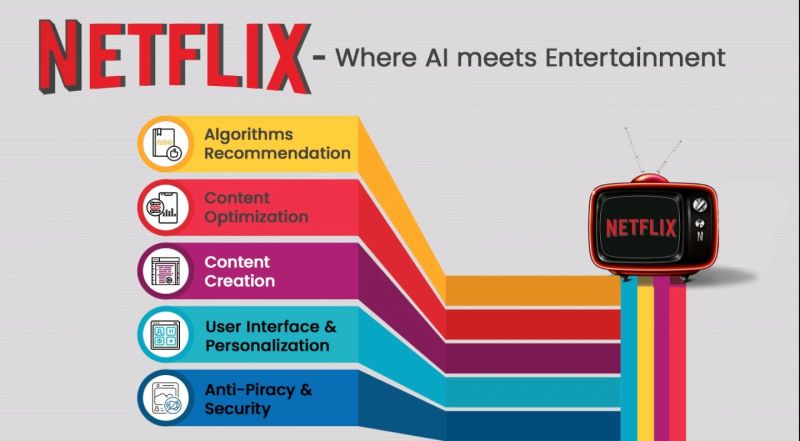

Omnichannel Customer Experiences
In 2025, the line between online and offline experiences will blur even further, with customers expecting seamless interactions across multiple touchpoints. An omnichannel marketing strategy ensures that no matter where your audience engages with your brand—whether it’s through social media, email, in-store, or mobile apps—the experience feels unified and consistent.
Leading brands are already embracing omnichannel strategies to create frictionless experiences. For example, Starbucks’ mobile app integrates with in-store interactions, allowing customers to order ahead, earn rewards, and pay seamlessly. This kind of cohesive approach will be crucial to staying competitive.
Actionable Step: Begin mapping out your customer journey to identify where your audience engages with your brand. Develop a strategy that ensures a consistent brand message and customer experience across all platforms and devices.
Embracing Sustainability in Brand Messaging
As consumers become more socially conscious, sustainability is no longer a nice-to-have but a necessity for brands looking to build trust and loyalty. By 2025, sustainability will be a key driver of purchase decisions, with customers seeking out brands that align with their values, particularly regarding environmental and ethical concerns.
Brands like Patagonia and Allbirds have built their entire ethos around sustainability, and their transparent, eco-friendly practices resonate deeply with today’s consumers. As environmental concerns grow, incorporating sustainability into your marketing messaging will become even more critical.
Actionable Step: Assess your brand’s current sustainability efforts and look for ways to authentically integrate these values into your marketing. Share your sustainability initiatives openly, whether through product development, sourcing, or corporate social responsibility.


Investing in Data Analytics for Better Decision-Making
Data will continue to be the lifeblood of effective marketing strategies in 2025. Brands that harness the power of data analytics will be better equipped to make informed decisions, predict trends, and tailor their campaigns to meet customer expectations. The ability to access real-time insights and predictive analytics will set top performers apart from the competition.
However, with the rise of data privacy regulations, businesses must also be mindful of how they collect and use customer data. Ethical data practices will be critical in building trust with consumers who are increasingly concerned about privacy.
Actionable Step: Invest in advanced data analytics tools and teams to improve your ability to make data-driven decisions. Ensure your data collection processes are transparent and ethical, and prioritize data security to build consumer trust.
Refining Digital Transformation Strategies
Digital transformation isn’t a one-time event—it’s an ongoing process that must evolve alongside new technologies and customer behaviors. As we look toward 2025, businesses that remain agile and continue to refine their digital transformation strategies will be better positioned to succeed.
Mobile-first approaches, automation, and digital agility will be essential in delivering the seamless experiences customers expect. Brands that fail to evolve their digital capabilities risk falling behind competitors who embrace the latest innovations in digital marketing.
Actionable Step: Continuously assess your digital channels and invest in technologies that enable you to deliver personalized, mobile-first experiences. Stay on top of emerging trends and be prepared to pivot your digital strategies as needed.
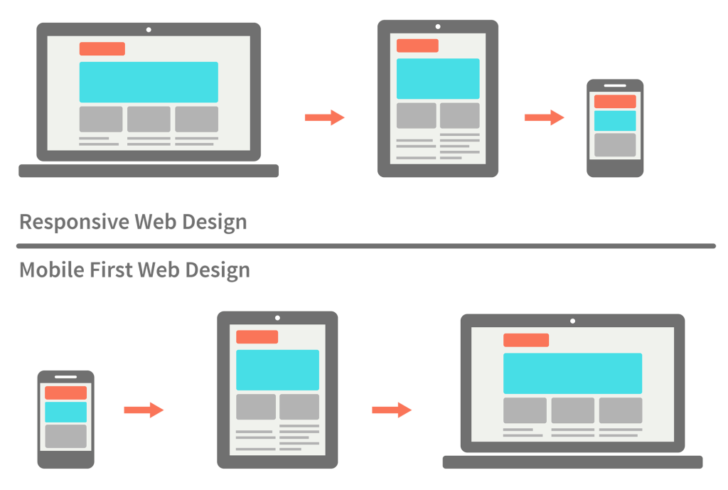

Embracing Ethical Marketing Practices
In 2025, consumers will increasingly favor brands that operate with transparency, inclusivity, and ethical values. Ethical marketing goes beyond avoiding misleading ads—it’s about building long-term trust through honesty, accountability, and a commitment to doing good.
Brands that embrace ethical marketing practices will resonate more deeply with today’s socially conscious consumers. This includes promoting diversity and inclusion, supporting social causes, and being transparent about business practices.
Actionable Step: Review your marketing practices and ensure they align with ethical standards. Be transparent about your brand’s values, and show genuine support for causes that matter to your audience. This will help build long-term loyalty and trust with your customers.
Agility and Innovation: The Cornerstones of Future Marketing
The future of marketing belongs to brands that can adapt quickly to change and foster a culture of innovation. Whether it’s responding to new consumer behaviors, pivoting during a crisis, or leveraging emerging technologies, agility will be key to staying competitive in 2025.
Agile marketing allows teams to iterate quickly, test new ideas, and respond to real-time feedback. Brands like Spotify and Nike have shown how an agile approach enables them to stay ahead of trends and maintain a strong connection with their audience.
Actionable Step: Build an agile marketing team by fostering a culture of experimentation and innovation. Encourage your team to test new ideas, iterate quickly, and adapt to changes in the marketplace.
Take the First Steps Toward Future-Proofing Your Marketing
As the marketing landscape continues to evolve, businesses that embrace AI-driven personalization, omnichannel experiences, sustainability, and ethical marketing will be well-positioned for success in 2025. But to stay competitive, brands must also remain agile and open to innovation.
Contact Bluetext today to start future-proofing your marketing strategies and ensure your brand is ready to thrive in the years to come.
In today’s fast-paced digital landscape, brands must continually evolve to stay relevant and competitive. One of the most transformative forces in modern branding is artificial intelligence (AI). From automating design processes to creating personalized visual experiences, AI is changing how brands are developed and perceived. But how do you leverage this cutting-edge technology to enhance your brand design while staying true to your core identity? In this post, we’ll explore how integrating AI into your brand design strategy can help you stay ahead of the curve.
The Importance of AI in Brand Design
Artificial intelligence has infiltrated almost every industry, and brand design is no exception. Traditional brand design workflows, which used to be time-intensive and reliant on human intuition, are now becoming more efficient and data-driven thanks to AI tools.
AI can assist in logo creation, generate brand color palettes, suggest fonts, and even layout entire webpages or advertisements in seconds. These tools allow businesses to produce consistent and aesthetically pleasing visuals more quickly and with fewer resources. But beyond speed and convenience, AI also introduces a level of precision and adaptability that wasn’t possible before, allowing brands to make informed, data-backed design decisions.
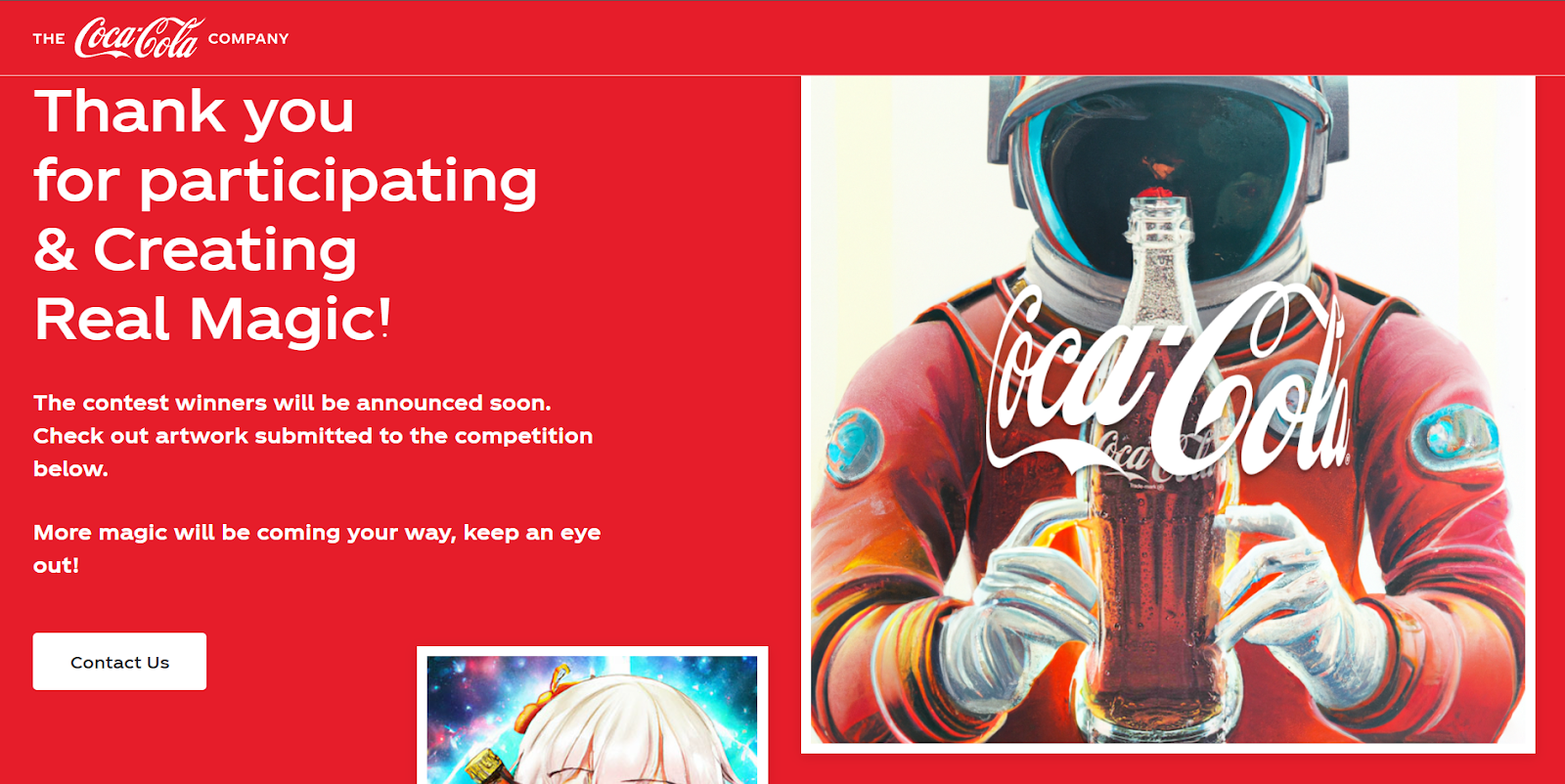

AI Tools Revolutionizing Brand Design
A host of AI-driven tools are already making waves in the design world, democratizing access to professional-level design. Tools like Adobe Firefly and Canva’s AI features enable both novice and professional designers to experiment with design elements like colors, typography, and layouts in real time. Looka, an AI logo design platform, allows users to create logos that fit their brand aesthetic in just a few clicks, using intelligent algorithms that adapt to user input.
These tools not only streamline processes but also give designers the creative freedom to focus on bigger-picture thinking while the AI handles the more repetitive aspects of design. Whether it’s generating mockups or automating the application of branding across multiple formats, AI tools are helping companies achieve consistent and impactful visual identities at scale.
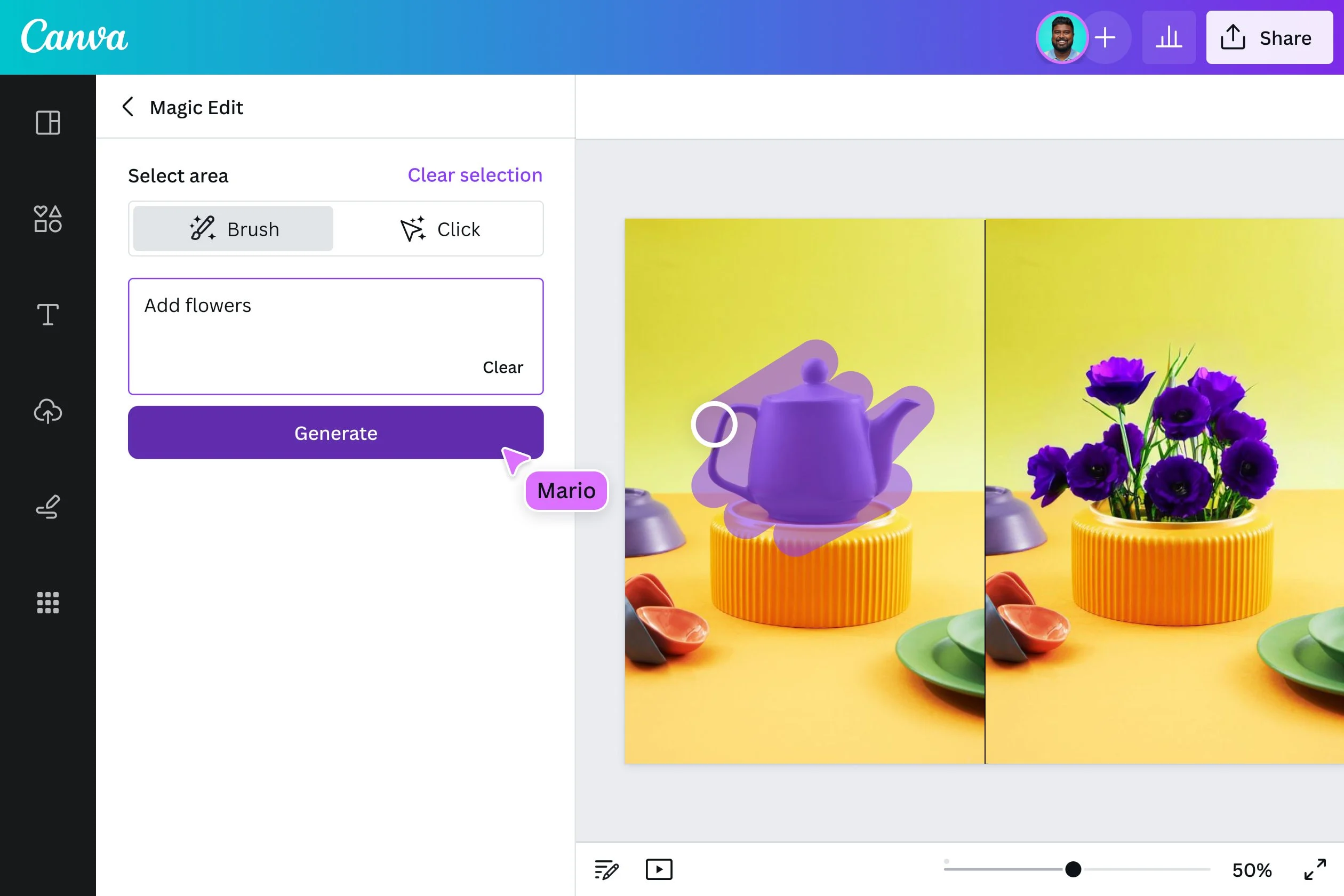

Personalization and Dynamic Design Through AI
One of AI’s most exciting applications in brand design is its ability to create personalized, dynamic visuals. By analyzing user data, AI can tailor brand experiences in real-time to better match individual preferences. This means brands can deploy personalized content, from custom website designs to targeted email visuals, based on user behavior and engagement patterns.
This level of personalization fosters a deeper connection between the brand and its audience, improving engagement and loyalty. For instance, AI can help e-commerce platforms generate product recommendations that are reflected in personalized brand designs, ensuring customers see visuals that resonate with their tastes and needs. This dynamic approach makes the brand feel more responsive, relevant, and customer-centric.
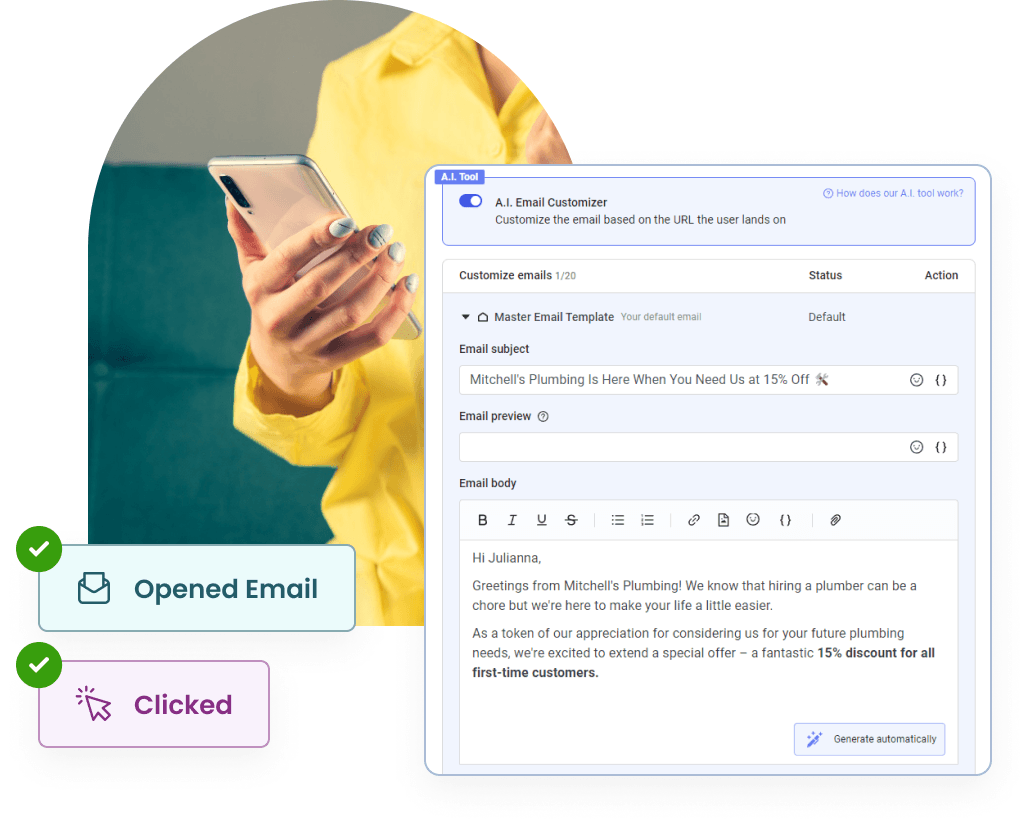

Maintaining Creativity and the Human Touch
While AI has proven itself to be a powerful tool in the designer’s toolkit, it’s important to remember that it’s not a replacement for human creativity. AI can enhance efficiency and produce data-backed designs, but the human touch is still crucial to infusing authenticity and emotion into your brand.
To maintain the balance, brands should view AI as a complement to human creativity, not a substitute. While AI can generate a polished logo in minutes, it takes a designer’s artistic vision to ensure that the logo communicates the right message and aligns with the brand’s ethos. Incorporating AI into your workflow should free up time for more strategic, creative thinking rather than completely automating the creative process.
How to Stay Ahead of the Curve
So, how can you stay ahead in this AI-driven design revolution? Here are a few practical tips:
- Start Small: Introduce AI tools incrementally into your design process. Use them to optimize repetitive tasks like resizing visuals or applying brand guidelines across platforms.
- Keep Learning: AI tools are evolving rapidly. Stay updated on new AI-powered design platforms and features to keep your workflow cutting-edge.
- Blend Creativity with AI: Don’t rely entirely on AI for design. Leverage its strengths in efficiency while maintaining human creativity to ensure your brand remains authentic and original.
- Experiment with Personalization: Use AI to create dynamic, personalized visual experiences that engage your audience. The more tailored your content is, the more effective it will be.
Conclusion
The integration of AI into brand design is not just a trend—it’s the future. AI offers unparalleled speed, precision, and customization that allow brands to innovate and compete on a global scale. However, the key to leveraging AI successfully lies in balancing its technological strengths with the creativity and emotional intelligence only humans can provide.
By embracing AI-driven tools and staying informed on the latest innovations, brands can maintain a competitive edge while still delivering designs that are authentic, personal, and aligned with their values. The future of brand design is a partnership between human creativity and AI’s efficiency—one that, when done right, will allow brands to thrive in the evolving digital landscape. Contact us today to explore how AI-powered design can elevate your brand to new heights!
As we stand on the brink of a new era in connectivity, 5G technology is set to revolutionize the digital landscape. For marketers, the advent of 5G presents a treasure trove of opportunities to engage audiences in ways previously thought impossible. At Bluetext, we’re excited to explore how faster connectivity can transform digital marketing, from enhanced mobile experiences to groundbreaking applications of augmented and virtual reality (AR/VR).
Faster Connectivity: The Backbone of Future Marketing
One of the most anticipated benefits of 5G is its unprecedented speed. With data transfer rates up to 100 times faster than 4G, 5G will significantly reduce latency and enhance the user experience. This improvement is crucial for digital marketing strategies that rely heavily on real-time data and instant communication.
Enhanced Mobile Experiences
Mobile devices are the primary touchpoints for consumers, and 5G is set to elevate this experience to new heights. Faster download and upload speeds mean richer, more interactive content can be delivered seamlessly. High-quality videos, interactive advertisements, and real-time customer service interactions will become standard, leading to higher engagement rates and improved customer satisfaction.
Additionally, 5G’s enhanced bandwidth capabilities will support a greater number of connected devices, facilitating more comprehensive and integrated marketing campaigns. Brands can leverage these capabilities to create more personalized and dynamic user experiences, ensuring they capture and retain their audience’s attention.
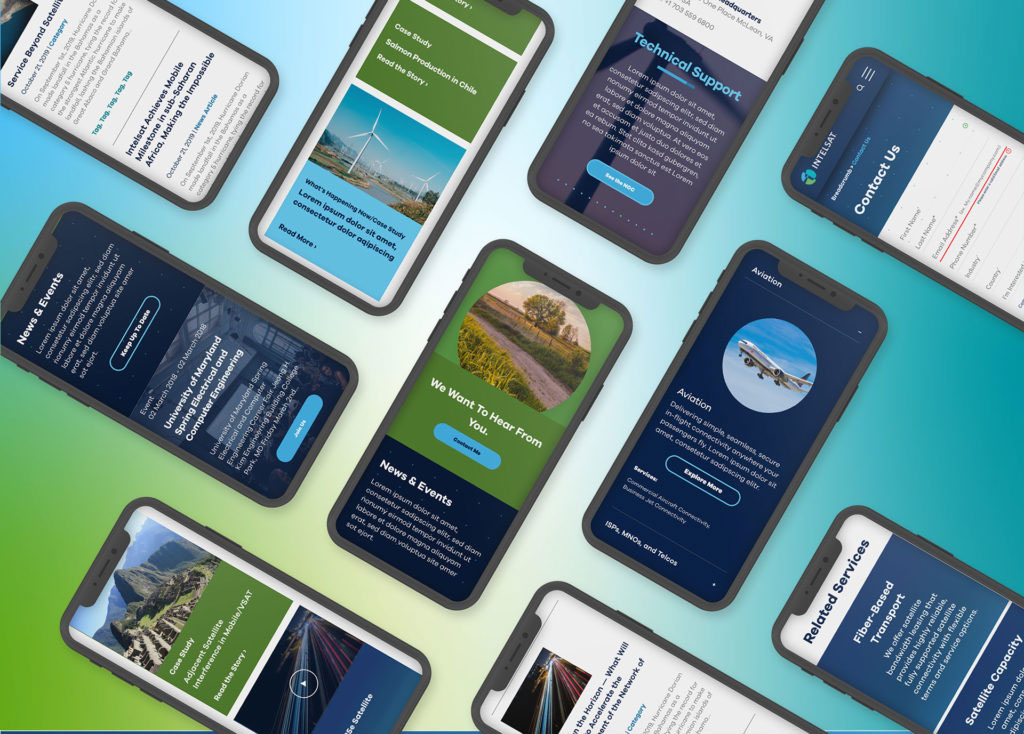

New Opportunities in Augmented and Virtual Reality
Perhaps the most exciting prospect of 5G is its potential to bring AR and VR into the mainstream. These technologies have been on the horizon for years, but the limitations of current networks have hindered their widespread adoption. 5G is set to change that by providing the necessary infrastructure to support the heavy data requirements of AR and VR applications.
Augmented Reality Marketing
AR offers marketers a unique way to engage consumers by overlaying digital information onto the physical world. With 5G, AR experiences will become more immersive and interactive. Imagine consumers being able to visualize how a piece of furniture would look in their home before making a purchase or trying on clothes virtually. These experiences not only enhance customer engagement but also reduce return rates and increase conversion rates.
Virtual Reality Marketing
VR takes immersion a step further by creating entirely new environments for consumers to explore. The high-speed, low-latency capabilities of 5G will make VR experiences more realistic and accessible. Brands can create virtual showrooms, host virtual events, or offer virtual tours, providing consumers with unique and memorable interactions that drive brand loyalty and sales.
5G Tips and Trends
To fully capitalize on the potential of 5G, here are some additional tips and trends to keep in mind:
1. Embrace Video Content
With faster speeds and better connectivity, video content will become even more prevalent. Invest in high-quality video production and consider incorporating live streaming into your marketing strategy. Live Q&A sessions, product launches, and behind-the-scenes content can significantly boost engagement.
2. Focus on Personalization
5G’s ability to handle large amounts of data quickly means more opportunities for personalization. Use data analytics to create highly targeted marketing campaigns that cater to individual preferences and behaviors. Personalized content is more likely to resonate with your audience and drive conversions.
3. Optimize for Mobile
As mobile usage continues to grow, optimizing your website and marketing materials for mobile devices is essential. Ensure that your content loads quickly and is easy to navigate on smartphones and tablets. A seamless mobile experience can greatly enhance user satisfaction and retention.
4. Leverage IoT (Internet of Things)
The increased connectivity of 5G will accelerate the growth of IoT devices. Marketers can use IoT data to gain deeper insights into consumer behavior and preferences. For example, smart home devices can provide valuable data on user habits, enabling more effective targeting and personalization.
5. Stay Ahead with AI and Machine Learning
The combination of 5G and AI will open new doors for predictive analytics and real-time decision-making. Use AI-powered tools to analyze data, predict trends, and optimize your marketing efforts. Automated chatbots, personalized recommendations, and dynamic content are just a few examples of how AI can enhance your 5G-enabled marketing strategy.
Embracing the 5G Future
The advent of 5G is more than just an upgrade in connectivity; it’s a paradigm shift that will redefine digital marketing. At Bluetext, we are excited to help our clients navigate this new landscape, leveraging the power of 5G to create innovative and effective marketing strategies. From enhanced mobile experiences to the groundbreaking use of AR and VR, the possibilities are endless. As 5G continues to roll out, the future of digital marketing looks incredibly promising, and we’re thrilled to be at the forefront of this revolution. Contact us to learn more.